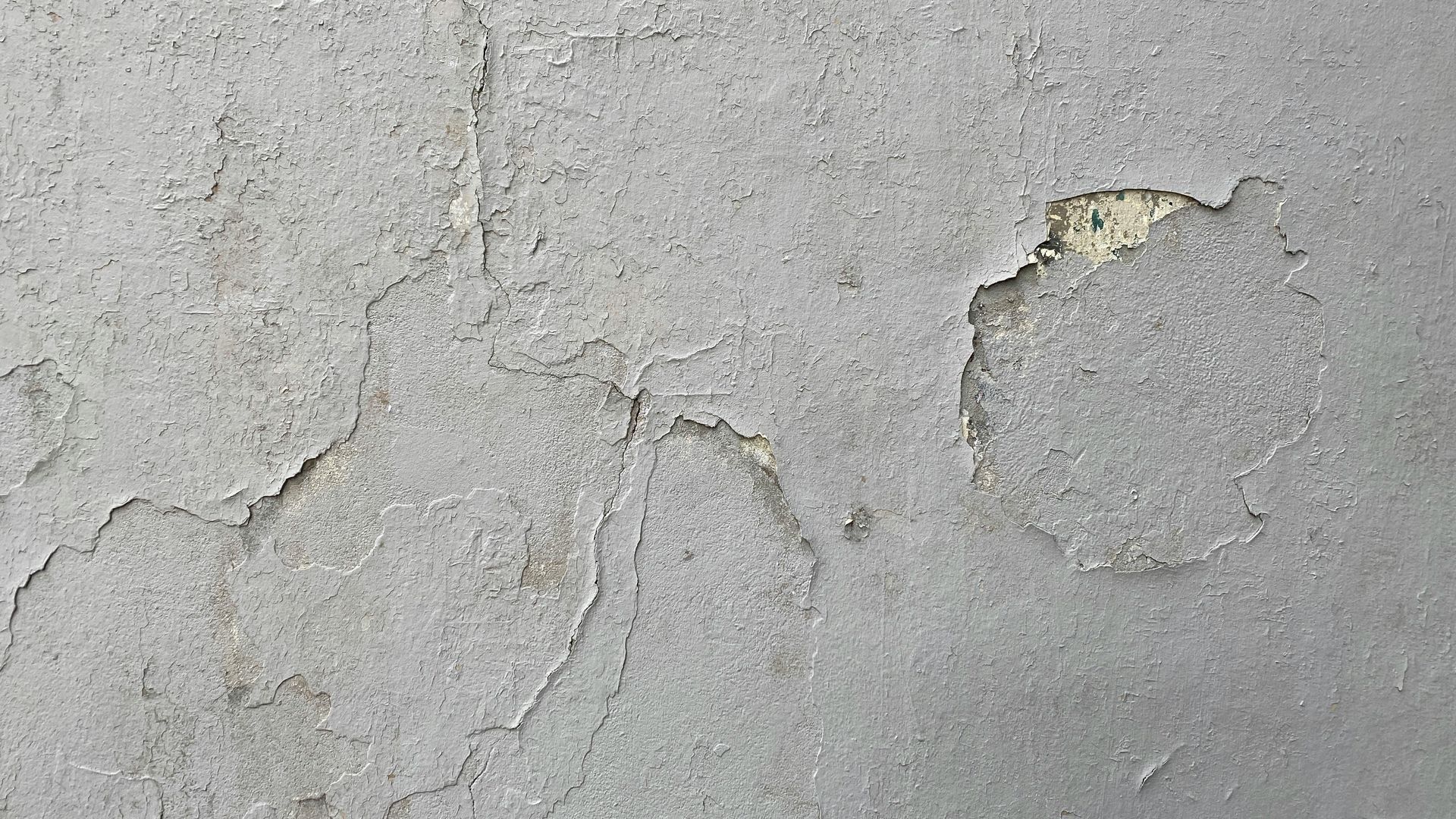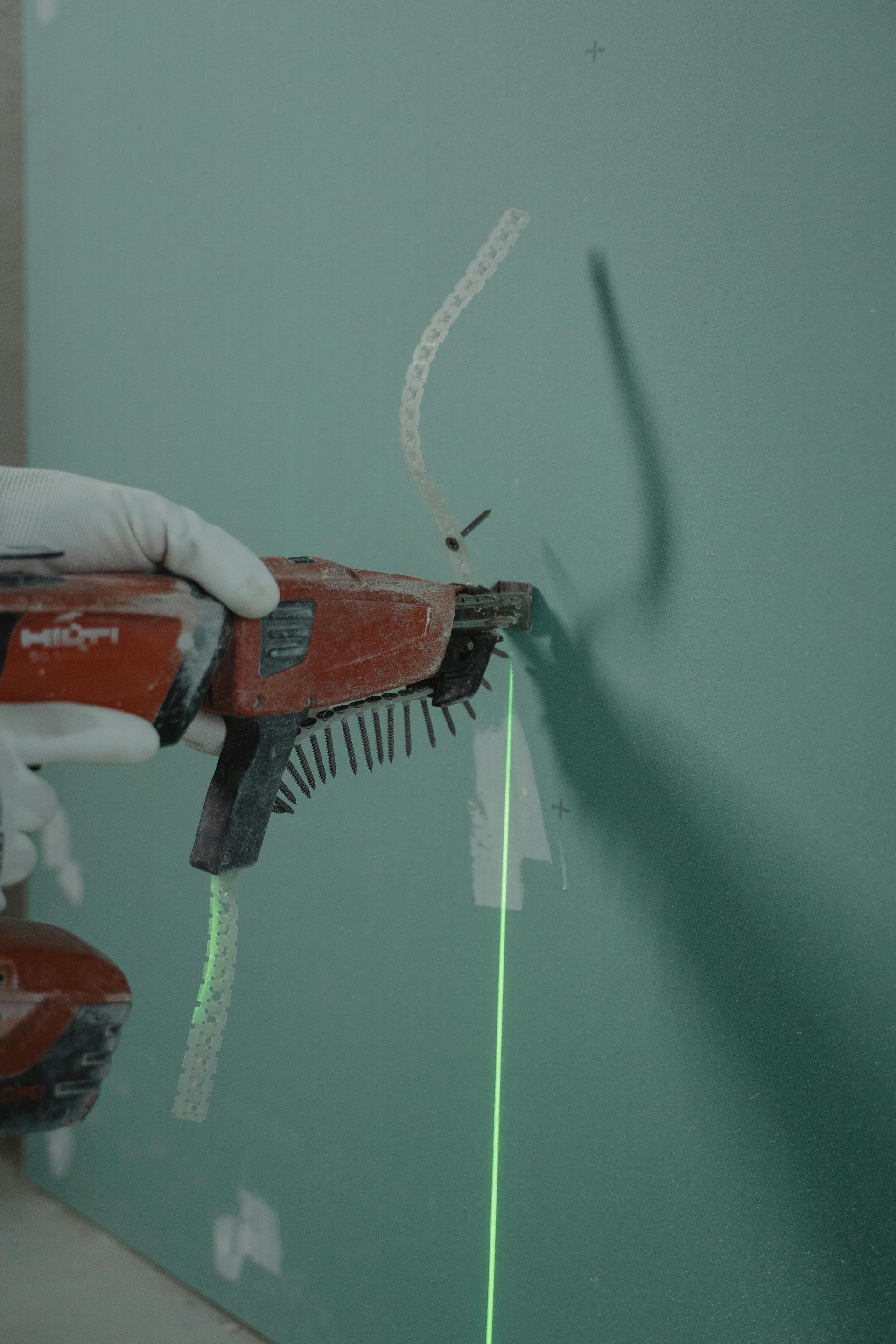
The Hidden Dangers of Ignoring Small Drywall Cracks
Those tiny lines creeping across your ceiling or wall might seem like just a cosmetic issue – something you can cover with a bit of paint or simply ignore. But small drywall cracks can actually be warning signs of bigger problems happening behind your walls or in your home's foundation.
Ignoring small drywall cracks can lead to serious structural damage, water infiltration, mold growth, increased energy costs, and decreased property value. What starts as a hairline crack can quickly expand, allowing moisture to seep in and creating ideal conditions for mold and mildew that threaten your family's health.
Understanding the causes of these small cracks and knowing when they signal serious trouble can save you thousands in repair costs down the road. This guide will help you identify the types of drywall cracks you should never ignore and explain when it's time to call in professionals to address the underlying issues.
Why Small Drywall Cracks Appear
Normal Settlement Cracks
Not all drywall cracks signal disaster. Homes naturally settle over time, causing minor stress cracks in drywall. These typically include:
- Hairline cracks at wall and ceiling corners
- Straight cracks running along drywall seams
- Small nail pops where fasteners have worked loose
These normal settlement cracks usually appear within the first year after construction and are generally not cause for alarm.
Warning Sign Cracks
Other types of cracks deserve immediate attention:
- Stair-step cracks (zigzag patterns) often indicate foundation shifting
- Horizontal cracks in walls may signal serious structural pressure
- Cracks wider than 1/8 inch suggest significant movement
- Cracks that continue to grow over time
- Cracks accompanied by a bulging wall or ceiling
Common Causes of Problematic Drywall Cracks
Several factors contribute to the more serious types of drywall damage:
Foundation Issues
Foundation problems are among the most serious causes of wall cracks. Signs include:
- Doors that stick or won't close properly
- Cracks that appear near window and door frames
- Sloping or uneven floors
- Cracks that appear on multiple walls
Water Damage
Water is drywall's worst enemy. Even minor leaks can lead to:
- Discolored cracks with yellowish or brownish stains
- Bubbling paint near the crack
- Soft spots in the drywall
- Musty odors near the damaged area
Structural Problems
Issues with your home's frame or support system may cause:
- Wide cracks that appear suddenly
- Cracks near load-bearing walls
- Sagging ceilings with cracks radiating outward
- Cracks accompanied by creaking sounds
Hidden Dangers Behind Those Small Cracks
Structural Damage Progression
What begins as a hairline crack can eventually compromise your home's integrity:
- Small cracks allow moisture penetration into wall cavities
- Moisture leads to rotting wood in structural members
- Weakened structure creates more pressure on drywall
- This creates a dangerous cycle of worsening damage
Health Hazards
Cracks provide perfect entry points for moisture, leading to:
- Mold growth behind walls or ceilings
- Respiratory problems for family members
- Allergic reactions and worsened asthma symptoms
- Poor indoor air quality
Energy Efficiency Problems
Even small cracks affect your home's environmental seal:
- Cracks create air leaks that drive up heating and cooling costs
- Drafts make your HVAC system work harder
- Increased humidity makes cooling more difficult in summer
- Cold spots near walls in winter
Pest Infestation Risks
Tiny cracks provide entry points for unwanted guests:
- Insects can enter through cracks as small as 1/16 inch
- Mice can squeeze through spaces as small as 1/4 inch
- Once inside, pests can cause additional damage to insulation and wiring
- Pest waste creates health hazards and unpleasant odors
When to Take Action: Types of Cracks That Demand Attention
Cracks That Signal Foundation Problems
Foundation issues are among the most serious and expensive to repair. Watch for:
- Horizontal cracks in basement or foundation walls
- Stair-step cracks in brick or block walls
- Cracks wider than 1/8 inch
- Cracks where the wall meets the ceiling
- Cracks accompanied by a tilting chimney or leaning walls
Cracks That Indicate Water Damage
Water damage can quickly lead to mold growth and structural deterioration. Look for:
- Cracks with discoloration or staining
- Cracks that appear after heavy rain
- Cracks in bathrooms, kitchens, or laundry areas
- Cracks accompanied by peeling paint or bubbling wallpaper
- Recurring cracks that return after repairs
Cracks That Suggest Serious Structural Issues
Some cracks warn of problems with your home's framework or support system:
- Multiple parallel cracks in the same area
- Cracks that extend across walls and ceilings
- Cracks near load-bearing walls
- Cracks accompanied by sloping floors or stuck doors
- Widening cracks that expand over time
DIY Assessment: Is It Time to Call a Professional?
Simple Tests You Can Perform
Before calling professionals, try these quick assessments:
- Mark the ends of cracks with a pencil and date them to track growth
- Place a coin in horizontal cracks – if it fits, it's time for professional help
- Check for drafts near cracks using a lit candle (held safely away from curtains or flammable items)
- Tap the wall near cracks – a hollow sound may indicate loose drywall
- Look for patterns of cracks throughout your home
When to Handle It Yourself
Some minor cracks can be DIY fixes:
- Hairline cracks from normal settling
- Small nail pops that haven't recurred after fixing
- Straight cracks along drywall seams without discoloration
- Corner cracks that don't extend into the middle of walls
- Cracks that have remained the same size for years
When to Call Professionals Immediately
Don't delay seeking expert help if you notice:
- Multiple cracks appearing in the same area
- Cracks wider than 1/8 inch
- Cracks with signs of moisture damage
- Cracks near structural elements like load-bearing walls
- Cracks accompanied by other warning signs like sticking doors or sloping floors
Professional Solutions for Problematic Drywall Cracks
Proper Diagnosis First
A good contractor will:
- Inspect the entire home, not just the visible crack
- Look for patterns of damage that indicate the true cause
- Use moisture meters to detect hidden water issues
- Check your foundation and structural elements
- Provide a comprehensive assessment before suggesting repairs
Repair Options Based on Root Causes
Different problems require different solutions:
For Foundation Issues:
- Foundation piering to stabilize the structure
- Soil stabilization to prevent further shifting
- Waterproofing to protect against moisture damage
- Crack injection with epoxy or polyurethane
For Water Problems:
- Source elimination (fixing leaks, improving drainage)
- Waterproofing treatments for walls
- Improved ventilation to reduce humidity
- Water barrier installation behind repaired drywall
For Structural Concerns:
- Wall reinforcement with additional framing
- Support beam installation or repair
- Joist sistering to strengthen sagging areas
- Complete drywall replacement with proper backing
Preventing Future Drywall Cracks
Moisture Control
Managing humidity and water is crucial:
- Fix plumbing leaks immediately
- Install bathroom fans that vent outside
- Use dehumidifiers in damp basements
- Clean gutters regularly to prevent water infiltration
- Maintain proper grading around your foundation
Structural Maintenance
Keep your home's framework in good condition:
- Address foundation issues at the first sign of trouble
- Inspect attic framing annually for signs of stress
- Maintain consistent temperature throughout your home
- Check wooden structural elements for signs of rot or insect damage
- Avoid removing walls without professional guidance
Quality Materials and Installation
When renovating or repairing:
- Use quality drywall appropriate for the room's moisture level
- Ensure proper drywall fastening techniques
- Allow for natural expansion and contraction at joints
- Use flexible caulking where drywall meets different materials
- Select crack-resistant drywall compounds for repairs
Don't Let Small Cracks Lead to Big Problems
Those tiny lines in your walls and ceilings might seem insignificant now, but they could be early warning signs of serious issues developing in your home. Taking action early not only saves you money on future repairs but also protects your family's health and safety.
When it comes to properly diagnosing and fixing drywall cracks, trust the experts who understand both the visible symptoms and the hidden causes. VX2 Contracting specializes in comprehensive drywall services throughout South Central Pennsylvania, including Harrisburg, Hershey, Gettysburg, Lancaster, York, Reading, and Chambersburg.
Our professional team has the expertise to identify the true source of your drywall problems and provide lasting solutions—not just cosmetic fixes. From minor crack repairs to major structural drywall work, kitchen and bathroom remodeling, steel stud framing, and acoustic ceiling installation, we deliver quality results that stand the test of time.
Contact VX2 Contracting today for a thorough inspection of your drywall cracks. Don't wait until small problems become big headaches—protect your home and your investment with expert care from the region's trusted drywall professionals.


